We absolutely encourage anyone buying a boat to sea-trial that boat. A purchase is a large financial commitment, and while warranties cover defects, there is no recompense if you make the wrong choice. Take delivery and it’s yours — for better or worse.
Now, how do you make the most of your demo ride?
For starters, don’t waste your time, or the dealer’s, testing every boat that strikes your fancy. You should have done your homework and your footwork by the time you request a sea trial plus weeded your list down, and basically be making the offer on the boat pending the outcome of its ride.
Ride quality isn’t the only thing you can assess during a sea trial, though. There’s a lot more a boat in the water can tell you that one in a showroom can’t. Check out these 12 tips for getting the most out of a sea trial.
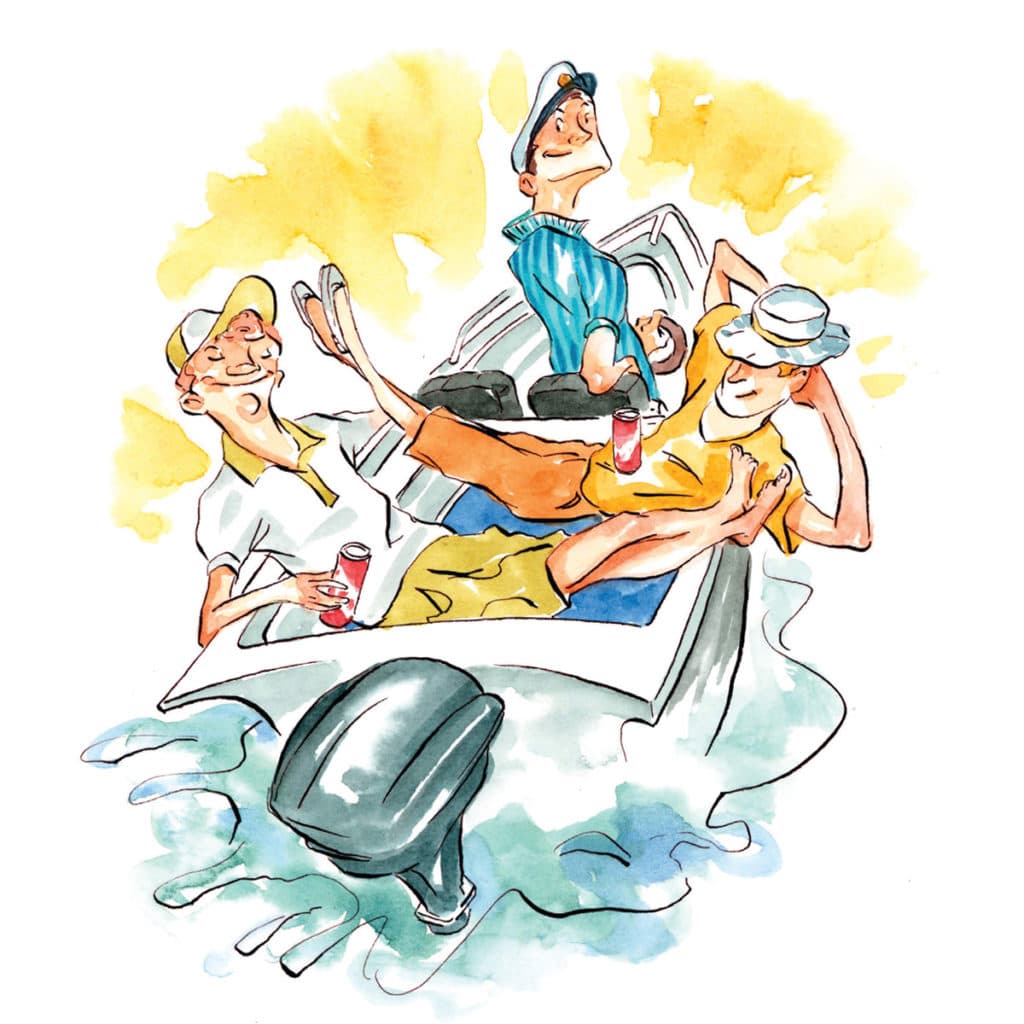
Power Type
If you are buying a used boat, obviously the power installed is the power you will get if you buy the boat. But for new boats, request a demo boat with the same make and model engines as those on the boat you are considering. This is important because, for example, you may cruise with a crew of four or more, keep the tanks full, and have a bunch of gear stowed aboard. Conversely, sea-trial boats are typically lightly loaded and sparsely crewed. So the weight disparity between trial boat and actual boat can result in a performance deficit on delivery day. Bottom line? If the boat performs sluggishly during a sea trial, you may want to order the boat with more power. Also, consider that the differences between power choices may manifest themselves in the form of serviceability or stowage capacity, not just speed, ride, economy and handling.
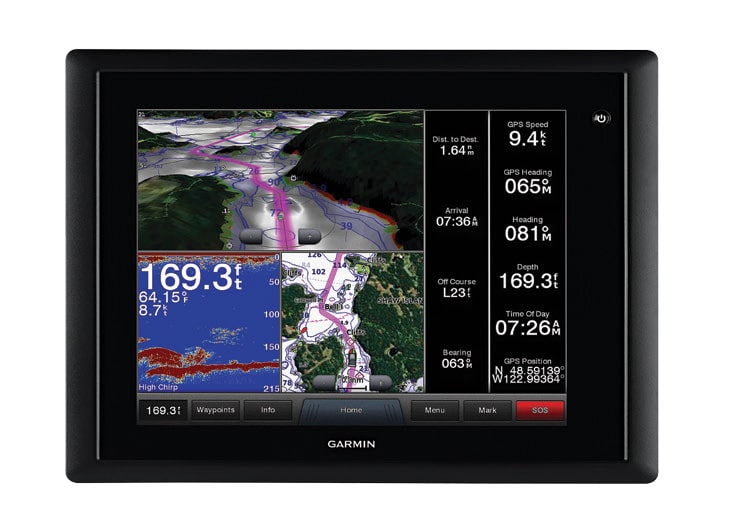
Marine Electronics
On delivery day — if you buy the boat — power up all the electronics and make sure they work, but during a pre-purchase sea trial, observe the visibility of the screens from the helm. Do so by running “away from” and “toward” the sun to see if glare is an issue. Also make sure to open any skylights if the boat is fitted with a hardtop. While at cruising speed, check to see if the depth sounder works. Also check for a sounder signal while in the shallow water of the marina. If the signal isn’t coming through, the transducer may be inappropriately installed.
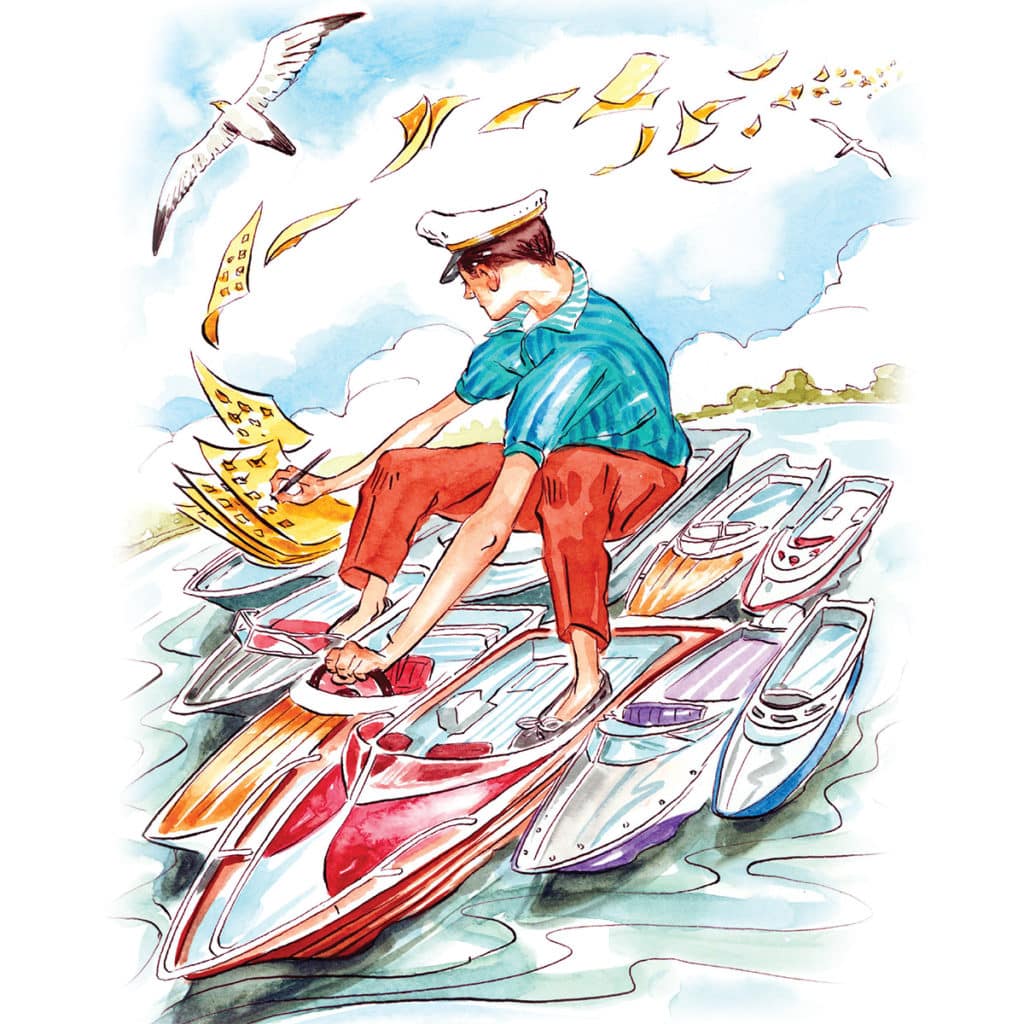
Minimum Planing Speed
A great characteristic to test for during a sea trial is minimum planing speed. Everybody knows that, by slowing down, you can alleviate a rough ride in rough water. But if the boat is not planing, control can be difficult. A planing hull is more stable and more responsive to the steering wheel when it’s on plane, primarily due to the dynamic stability that occurs with enough lift, in addition to faster water flow past the rudders, drive or gear cases.
Using the tachometer and the GPS display, and with the trim tabs and drives fully deployed down to give the boat every advantage, incrementally bring the speed down. We like to drop by 200 rpm, pausing for at least a minute at every increment until the boat falls off plane. When’s that? That’s when, instead of two “chine wakes” coming together to form a V some distance aft of your boat, there is just solid whitewater coming from across the width of the entire transom. At that point, bump the throttle back up to get the chine wakes and maintain the speed. Make some turns. If the boat stays on plane, that is the minimum planing speed. Write it down, and perform the same process with the other boat you sea-trial. For any two comparable boats, the ability to achieve a slower minimum plane is superior for rough-water work.

Passenger’s View
We like to use the word crew when referencing family and friends aboard, since it denotes a level of participation that we believe ramps up the fun of boating. But during a sea trial, we suggest you act like a passenger — a person without sea legs who is just along for the ride. Put yourself in those shoes and sit in various places around the boat where you would be located while someone else skippers the boat. Find out if it is easy to move from the cockpit to the head in the cabin. Should a handhold or grab rail be added? Is there excessive vibration when lounging on the companion seat? How about that transom lounge: Do you get a whiff of exhaust or does a swim platform bracket cause an annoying mist of spray? Do seat cushions “bottom out” as the boat crests waves at “normal” cruising speed for the conditions on your test day?
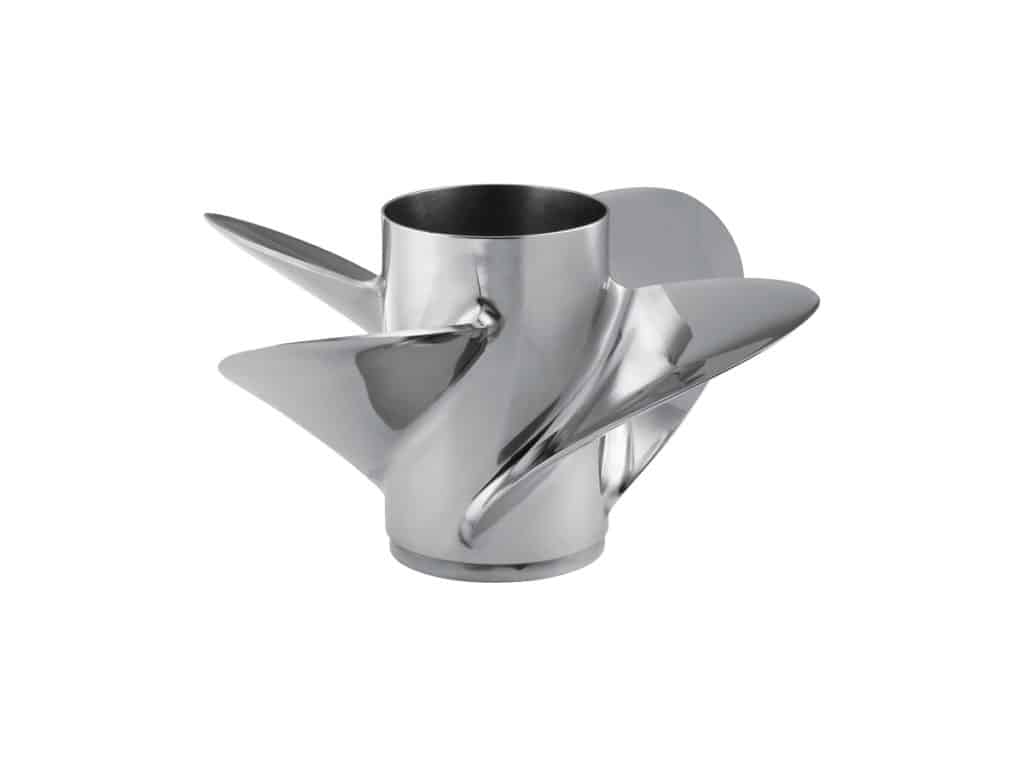
Proper Propeller
Proper Propeller
After establishing the engines that will power your demo boat, source an owner’s manual or service manual and determine the engine’s recommended maximum rpm range. During your trial, be sure to run the engine up to wide-open throttle and note the rpm on the tach. The higher the reading relative to the specified range, the better. If it doesn’t fall within the recommended range, this could indicate that your boat is outfitted with the wrong prop. Too low? Overpropping the engine can do serious damage over time. Too high? Underpropping can cause carbon buildup and harm the bearings. Experts say it should be on the high end of the range during tests so it will operate within the wider range when fully loaded, bottom-painted and equipped for personal use — all of which make the boat heavier and cause the engine to drop revolutions per minute.
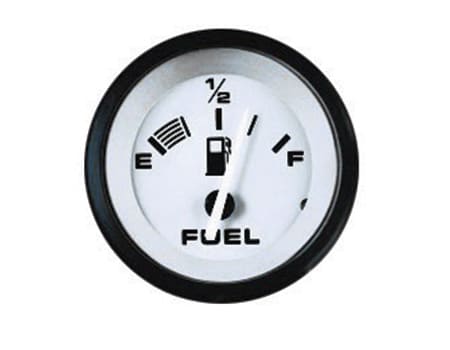
Score More
Most boats today are equipped with gauges that directly output fuel consumption. Ask the captain or salesperson to set the gauge to read the fuel burn rate, and note the rate at several speeds you anticipate running the boat.
This test may not be of importance to some boaters. In fact, none of these tests is intended to be a requisite to the purchase of any and all boats. They are examples that will apply to many boats and many boaters. Most importantly, they serve to show the many characteristics that can be assessed only with a boat in the water.
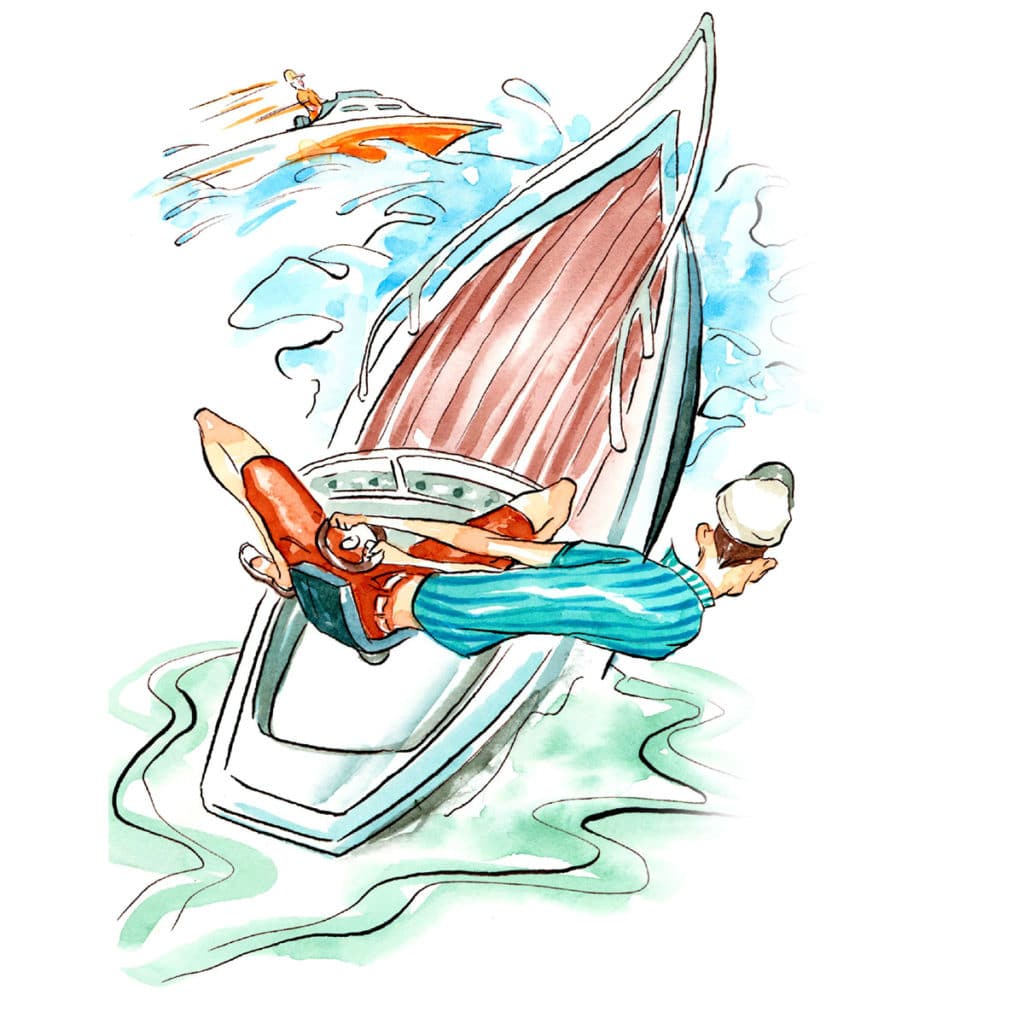
Visibility from the Helm
Hang around almost any boat at a boat show and you will hear someone eventually complain that visibility from the helm is impeded. These statements are unfair because boats blocked up in a convention center are usually not fixed at the same angle at which they will run in the water, nor is the skipper’s stance and posture the same in a static boat as it would be while running the boat.
During your sea trial, you can use information from ABYC standard H-1, “Field of Vision from the Helm Position.” Read on for some highlights from that standard.
In order for this standard to be effective, the boat must be operated in a reasonable and prudent manner. You must be aware that boats can be operated in a manner and at certain speeds causing trim and/or roll angles such that vision is obscured. This standard cannot assure that a boat can be operated without some loss of vision from the helm position while operating at high trim angles during the transition between displacement and planing mode. This standard does not relieve the operator of the requirement to comply with the U.S. Coast Guard Navigation Rules. Movable items such as persons, gear and convertible tops are considered under the control of the boat operator and therefore are not obstructions to visibility for the purpose of this standard.
Actual standard compliance requires elaborate setup and measurement that will not be possible for the layman to execute within the bounds of the typical boat-buying process, but during your trial you can gain insight useful when comparing one boat with another. Look forward and aft, and especially if the boat has a hardtop or an enclosed helm, make sure you can see another boat coming up your wake and passing you close on either side. Also note how close under your bow you can spot an object while at cruising speed and in cruising trim; for instance, at what distance does the lighthouse, radio tower or church steeple disappear from view? Use the radar or GPS to confirm the distances, write them down, and break them out when you sea-trial the next boat.
Be advised that the use of engine trim and trim tabs in order to change the angle at which you can see is an acceptable method of compliance.
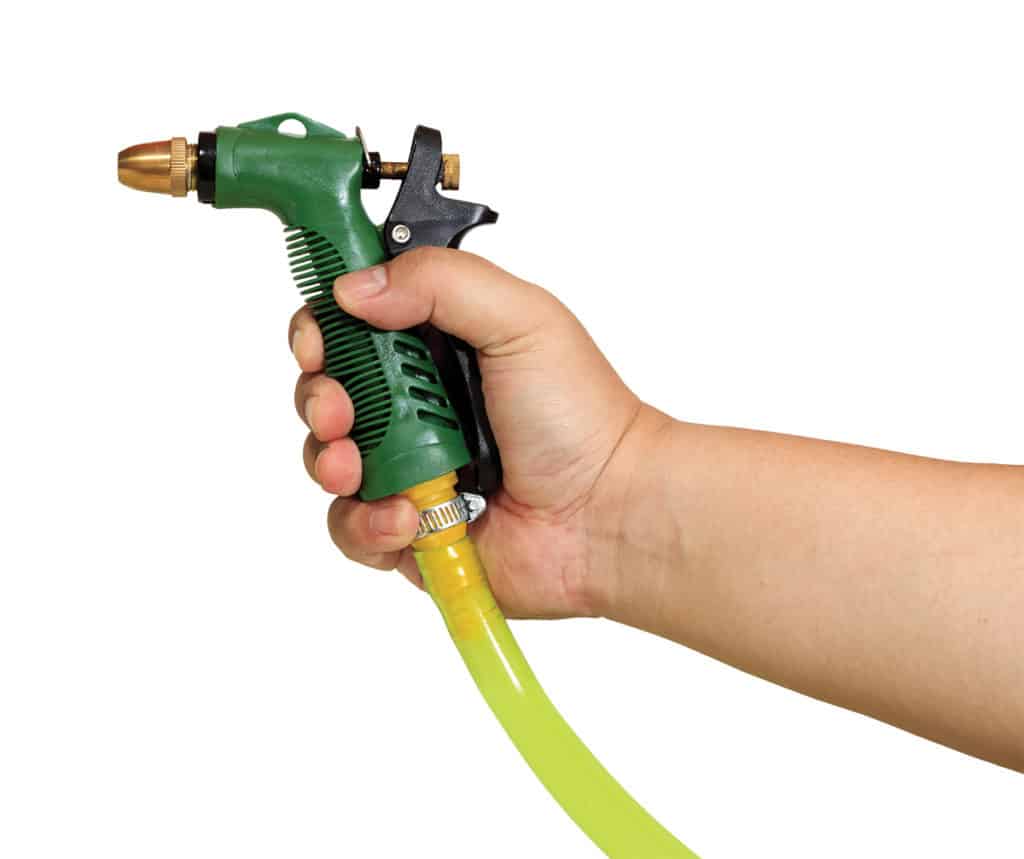
Self-Bailing Cockpit
Self-Bailing Cockpit
The American Boat and Yacht Council (ABYC) standard H-4 for self-bailing cockpits calls for the scuppers to drain 75 percent of the flooded cockpit in 90 seconds. Think about that for a moment, and try to visualize it. The ABYC also calls for a minimum 1-inch scupper diameter.
A simpler comparative test is to get the dock hose and squirt water in the cockpit. See how fast water drains. Does the water puddle before it drains? A big green wave is going to put more water in the ’pit than the hose. Now stand at the transom with a buddy or the salesman, adding the weight of a couple of humans as would be the case were you boating a fish or working on the engine. How does the cockpit bail now? Only a sea trial will tell you this.
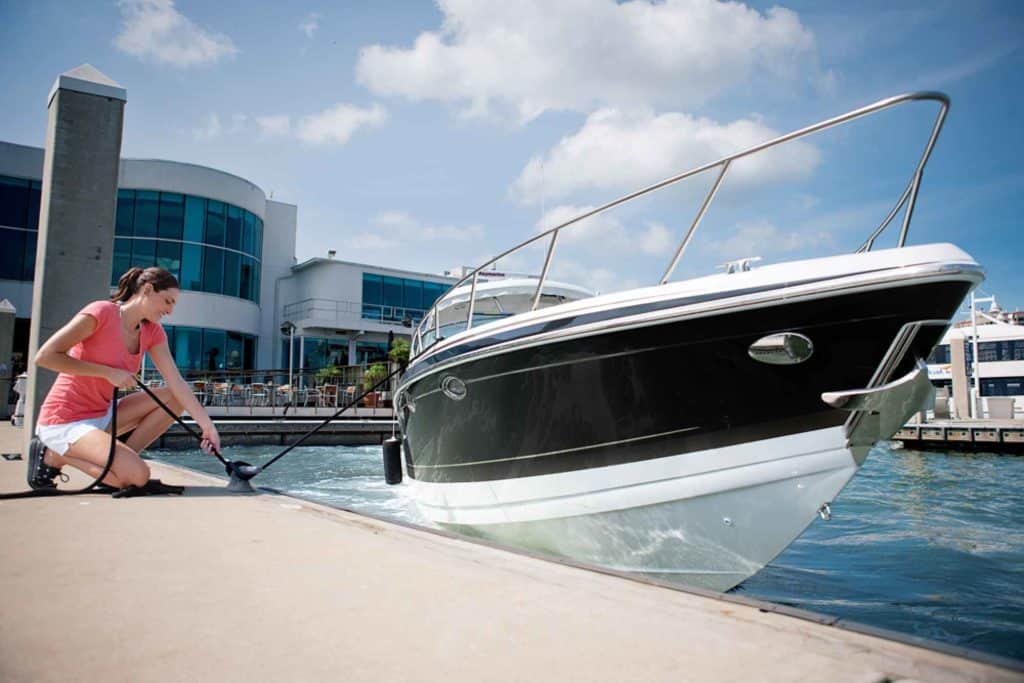
Roll Period
As a corollary to your static stability test, test for the boat’s roll period. This is the amount of time it takes a boat to roll from heeled over onto one side to heeled over onto the other side and back again. Untie the boat. Then use crew, family members or passers-by to help you weight one side of the boat down as far as possible and then let it go, using a stopwatch to record the time until it returns.
A generally accepted principle of naval architecture for crew comfort is that roll period in seconds should equal 1 to 1.1 times the beam in meters. So, a boat with an 8-foot (2.5-meter) beam taking three seconds to roll from one side to the other and back to the original side is right in the comfort zone. Boats that score less than 1 will be fast rollers or “stiff” boats and less comfortable drifting, while boats that score higher will be “tender” boats and will roll slower. Extremes in either are bad and may be unsafe. Your task, once again, is to collect data for comparative purposes, rather than seeking an absolute.
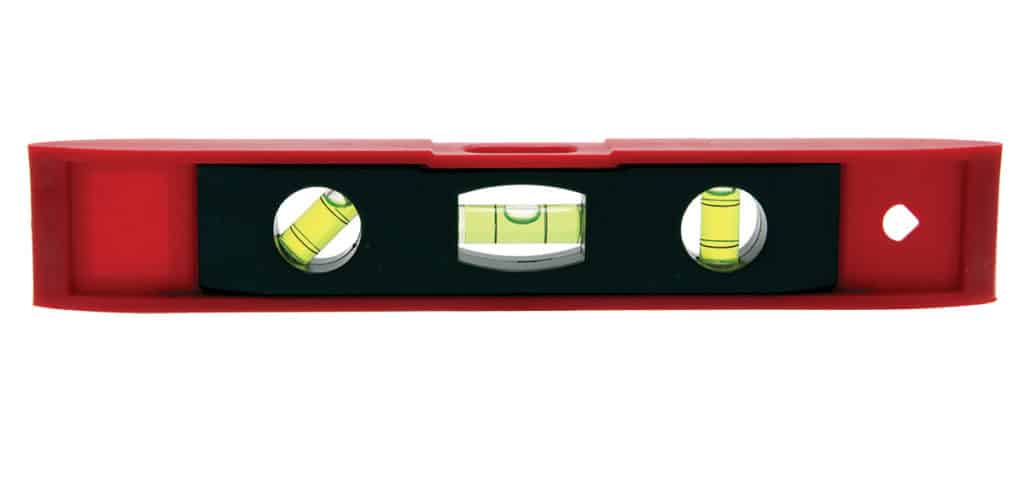
Stability
Here’s another test you can conduct with the boat at the dock. Place increasing numbers of crew on one side of the cockpit and note, using an inclinometer or simply a small bubble level, how much the boat lists. This is a gauge of the boat’s static stability. Generally, boats with increased static stability have a quicker, snappier motion than boats with less static stability. In short, the boat that lists less will rock shallower and quicker, rather than deeper and slower. Most boaters prefer a boat with increased static stability for inshore or calm-water work, while boats with greater ultimate stability (those that list more but don’t follow the wave shape) are preferred for offshore service. But don’t get hung up looking for absolutes. Instead, take notes and compare the stability of boat A to boat B.
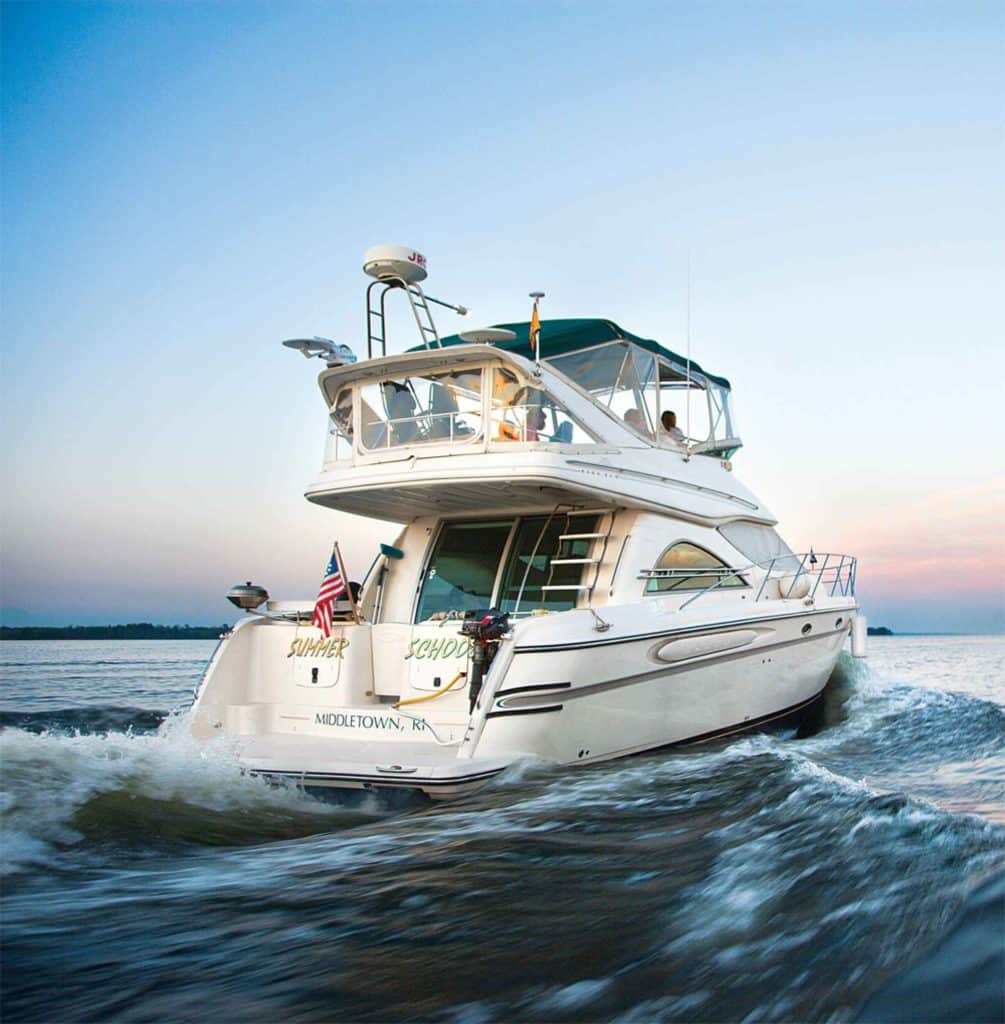
Head-Sea Ride
If the boat is an offshore model, you should insist upon the chance to run it in open water. Head out of the inlet or harbor. Set a course directly into the seas, trim the boat, and adjust the throttle for the most comfortable speed in those conditions. Write down the speed and the sea state. Remember, for the sea trial to have the most value in helping you decide which boat to choose, you’ll need to compare it against the other boat or boats on your short list. Run the course for several minutes, at least. In addition to “tuning in” to how you feel, note how accessories like tops and towers are reacting to the ride. Are they shaking and wracking? Will this cause fatigue failure at the welds or stress cracking at the mounting points? Write down your thoughts.
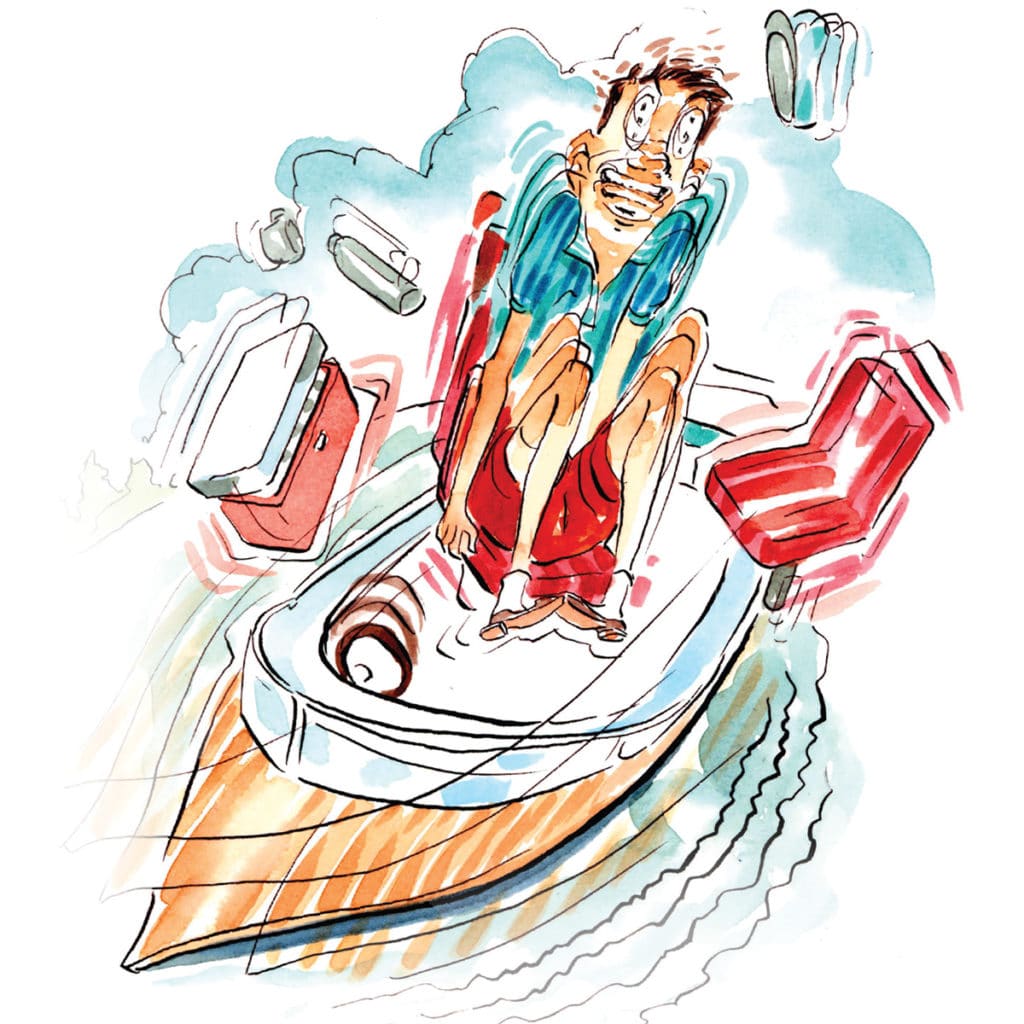
Down-Sea Ride
Use the same procedure while running down-sea, noting the conditions and adjusting trim and throttle. On this heading, attune yourself more to handling than to ride softness.How much is the boat slowed as it enters the back of each wave? How much must you advance and let up on the throttle? Does the boat climb waves or try to go through them? Now adjust your heading so you are running a quartering course, away from the waves at 45 degrees. This is generally the sea state in which many boats are most challenged to stay on course. How vigilant must you be at the wheel in order to keep the boat on the desired heading? Use the compass or landmarks during this part of the trial — they are better indicators for this than the GPS digital display. Write everything down: There are no absolutes for boats to hit. Your goal is a data bank of information that you can use to compare against the other boat on your short list when you sea-trial it.
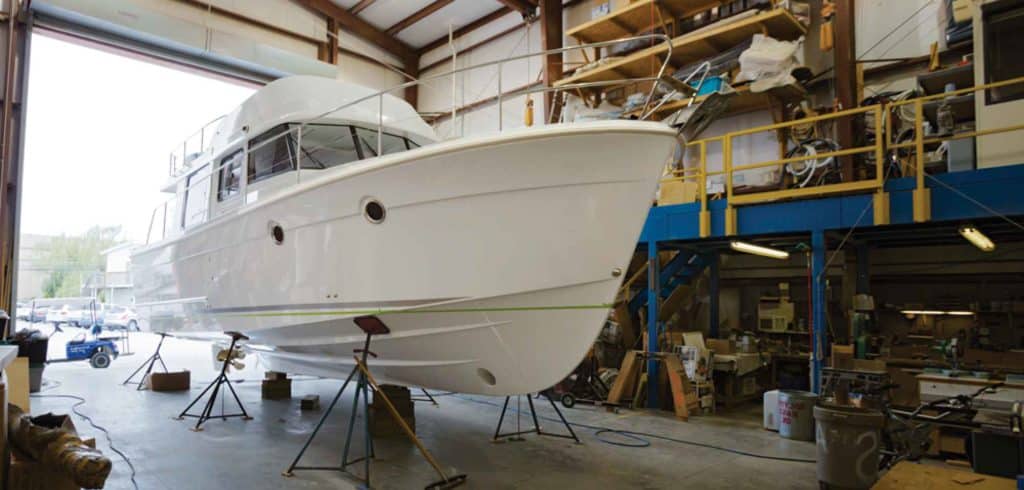
The Other Essential: Get a Survey
The Other Essential: Get a Survey
Even boaters who shop for brand-new boats can benefit from the services of a marine surveyor. The benefits range from helping to ensure that new-boat “glitches” are taken care of before delivery instead of under warranty after you own the boat, to receiving the more serious “suitability for service” report a professional surveyor can deliver. Reach out to these organizations when seeking a surveyor:
Society of Accredited Marine Surveyors Inc.
(SAMS): marinesurvey.org
National Association of Marine Surveyors
(NAMS): namsglobal.org









